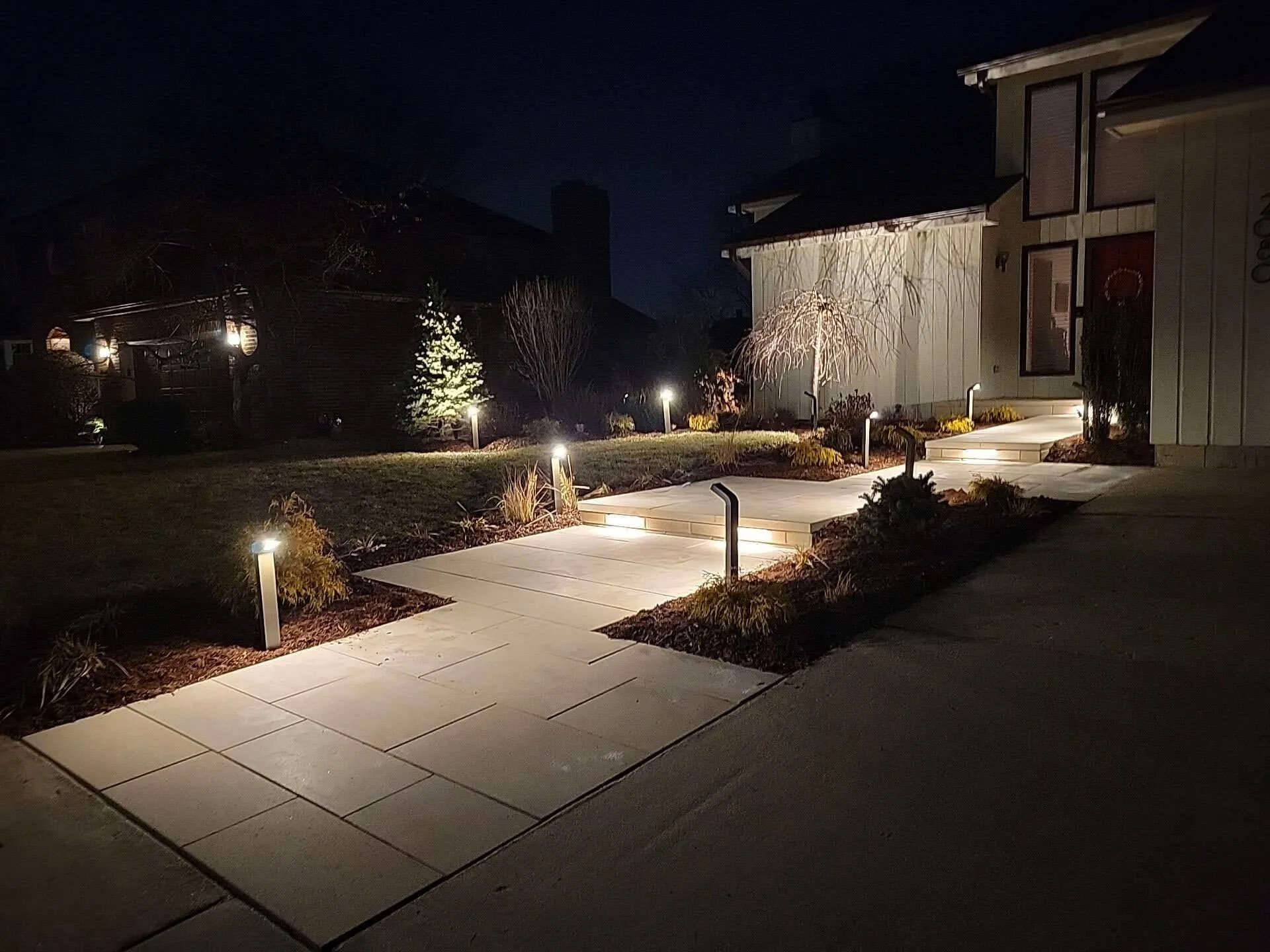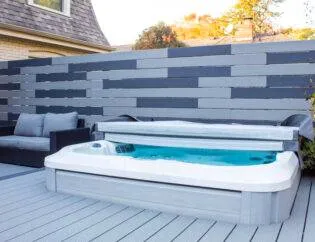
Small Backyard Designs That Transform Chicago's Tight Outdoor Spaces
You don't need a sprawling lawn to create an outdoor oasis. In Chicago's suburbs, where yards average just under 3,000 square feet, smart backyard design makes every inch count. Property sizes keep shrinking while home values climb—making thoughtful outdoor improvements more critical than ever.
Did You Know? Chicago Outdoor Living Statistics
Before diving into design ideas, consider these eye-opening facts about outdoor spaces in the Chicago area:
- 90% of Americans with outdoor spaces used them more during recent years, with Chicagoans leading the trend in backyard renovations (Source: International Casual Furnishings Association, 2021)
- Chicago ranks among America's most densely populated cities at 12,750 people per square mile—meaning outdoor privacy solutions matter more here than almost anywhere else (Source: Wikipedia Demographics of Chicago, 2025)
- Midwest backyards average 9,583 square feet, smaller than the national average but larger than coastal properties (Source: OwnTheYard.com, 2021). Of course, the reality is much more different for outdoor areas in densely populated urban areas.
- Outdoor improvements can boost property values 10-15%, with some features like outdoor kitchens delivering returns of 55-200% (Source: Canadian Real Estate Magazine, 2024)
- 70% of homeowners say an impressive patio beats a big-screen TV for wowing guests (Source: International Casual Furnishings Association, 2021)
- Rooftop kitchens are surging in Chicago, as homeowners maximize every available outdoor inch (Source: Axios Chicago, 2024)
- Landscaping alone adds 5.5-12.7% to home values—that's $16,500 to $38,100 on a $300,000 Chicago-area home and going up and the price is more expensive. (Source: Virginia Tech research via Bankrate, 2023)

Understanding Small Backyard Potential
Your compact Chicago backyard holds more promise than you think. During our brief warm seasons, these spaces become essential living areas. Mt. Prospect homeowners regularly transform narrow side yards into lush garden pathways. Arlington Heights families convert tiny patios into multi-functional entertainment zones.
The trick? Stop seeing limitations. Start seeing possibilities.
Take that awkward corner by your garage. With vertical plantings and a small water feature, it becomes a meditation spot. Your narrow side yard? Add stepping stones, ornamental grasses, and subtle lighting—suddenly you have a charming entrance that rivals any front walkway.

Assessing Your Space: Key Considerations
Walk your property with fresh eyes. Note where morning sun hits, where shadows fall in the afternoon. Check your drainage after a typical Chicago thunderstorm. Measure twice—you'll need accurate dimensions for any serious planning.
Essential assessment points:
- Exact dimensions of usable space
- Sun patterns throughout the day (crucial for plant selection)
- Drainage issues, especially near foundations
- Existing features worth keeping
- Privacy gaps that need addressing
- Your actual lifestyle needs
Skip the fantasy outdoor kitchen if you rarely cook outside. Focus on what you'll genuinely use.
Chicago-Area Climate and Its Impact on Design
Our weather swings from brutal winters to sweltering summers, often in the same week. This reality shapes every design decision. Composite decking handles freeze-thaw cycles better than wood. Metal furniture needs powder coating to survive. Plants must tolerate both road salt and drought.
Smart Chicago-area choices include permeable pavers that manage spring runoff and native plants that shrug off temperature extremes. Consider materials that age gracefully—you're not replacing that patio every few years.
Integrating Indoor and Outdoor Living
Your backyard should feel like another room, not a separate property. Match your deck stain to interior wood tones. Choose outdoor cushions that echo your living room palette. Install sliding doors that create seamless transitions.

This connection matters most during our shorter outdoor season. When you can move freely between spaces, you'll use your backyard from April through October instead of just July and August.
Maximizing Functionality in Limited Areas
Every element needs to earn its place. Built-in benches with storage underneath beat standalone chairs. Raised planters define spaces while adding greenery. A fire pit provides warmth, ambiance, and a gathering spot—three functions in one feature.
Multi-level designs work particularly well in Chicago's small yards. A raised deck creates an entertainment zone while preserving ground-level space for gardens or play areas. Even a 6-inch elevation change helps define separate "rooms" outdoors.

Choosing the Right Design Style for Your Home
Your backyard should complement your home's architecture, not fight it. Popular Chicago-area styles that work:
- Prairie Modern: Clean horizontal lines with native plantings
- Urban Contemporary: Sleek materials, minimalist approach
- Traditional Midwest: Classic materials, cottage garden elements
- Industrial Chic: Metal and concrete with softening greenery
Avoid trendy extremes. That zen rock garden might look great in photos but feels out of place in a Schaumburg subdivision.
Essential Elements of Small Backyard Layouts
Successful small backyards share common elements:
- Defined seating areas (even just 8x8 feet works)
- A clear focal point (water feature, sculpture, specimen tree)
- Logical pathways (no dead ends or awkward routes)
- Layered plantings (height creates depth)
- Strategic lighting (extends usability past sunset)
- Hidden storage (for cushions, tools, toys)
These basics apply whether you have 500 or 5,000 square feet.
Innovative Space-Saving Techniques
Vertical space is your secret weapon. Columnar trees provide screening without spreading. Wall-mounted planters add greenery at eye level. Fold-down tables disappear when not needed.
Tiered planters along fence lines maximize planting space in tight areas. Retractable awnings offer shade without permanent structures eating up square footage. Every vertical surface becomes an opportunity for greenery or storage.
Selecting Weather-Resistant Materials
Chicago weather destroys cheap materials. Invest in:
- Composite decking rated for extreme temperature swings
- Stainless steel hardware (regular steel rusts by year two)
- Furniture-grade lumber for any wood elements
- Concrete sealers designed for freeze-thaw cycles
Yes, quality costs more upfront. But replacing rotted decking every five years costs even more.
Incorporating Water Features Wisely
Water adds movement and masks traffic noise—valuable in dense suburbs. Small fountains work better than ponds in limited space. Self-contained units avoid complex plumbing. Consider models with automatic shut-offs for our unpredictable freezes.
Place water features where you'll see them from inside. That bubbling fountain provides year-round enjoyment, even when viewed through winter windows.
Lighting Strategies for Ambiance and Usability

Good lighting transforms your backyard from a daytime-only space to an evening retreat. Layer your approach:
- Path lights for safety (solar works fine here)
- Uplights on trees or architecture
- String lights for ambiance (weatherproof only)
- Task lighting near grills or seating
Keep it subtle. You want atmosphere, not stadium lighting that annoys neighbors.
Plant Selection for Year-Round Appeal
Chicago gardens need four-season interest. Spring bulbs emerge when we're desperate for color. Summer perennials provide months of blooms. Fall foliage extends the show. Evergreens maintain structure through winter.
Native plants handle our climate without constant intervention. Purple coneflowers, prairie dropseed, and serviceberry trees thrive with minimal care. Mix in some non-natives for variety, but make natives your backbone.

Sustainable Practices in Backyard Design
Sustainability saves money and maintenance time. Rain barrels capture roof runoff for dry spells. Permeable pavers reduce flooding. Native plants need less water and no fertilizer once established.
Compost bins fit even tiny yards—try tumbler styles that contain odors. Solar lights eliminate wiring costs. These choices benefit your wallet and the environment equally.
Privacy Solutions for Urban Settings
Close neighbors demand creative screening. Horizontal slat fences provide privacy while looking contemporary. Mixed hedges feel less wall-like than single-species rows. Pergolas with climbing vines create overhead screening.
Layer your privacy solutions. Combine a 4-foot fence with tall grasses for a 6-foot screen that doesn't feel imposing. Strategic tree placement blocks specific sight lines without closing off your entire yard.
Maintenance Tips for Longevity
Design for the maintenance level you'll actually provide. Choose perennials over annuals if you won't replant yearly. Install drip irrigation if you forget to water. Use mulch to suppress weeds and retain moisture.
Create maintenance schedules that match Chicago's seasons:
- Spring: Clean up, prune, fertilize
- Summer: Water, deadhead, enjoy
- Fall: Plant, divide, prepare for winter
- Winter: Plan next year's improvements
Navigating Local Regulations and Zoning
Every suburb has different rules. Mt. Prospect fence heights differ from Arlington Heights requirements. Permits for structures vary by municipality. Some areas restrict impervious surface percentages.
Check regulations before designing, not after. Your village website lists requirements. When in doubt, call the building department. They'd rather answer questions than issue violations.
Budget-Friendly Design Ideas
You don't need deep pockets for a beautiful backyard:
- Phase your project—do the patio this year, plantings next
- Buy plants small—they'll catch up quickly
- Use found materials—reclaimed brick adds character
- Do prep work yourself—save labor costs
- Focus spending on high-impact areas—the view from your kitchen window
Small improvements compound. Even adding outdoor string lights and fresh mulch creates noticeable change.
Technology Integration in Outdoor Spaces
Smart irrigation controllers adjust watering based on weather—crucial for Chicago's variable rainfall. WiFi-controlled lighting creates instant ambiance. Weatherproof speakers bring entertainment outside.
But don't overdo it. Technology should enhance outdoor living, not dominate it. Keep the focus on nature and relaxation.
Seasonal Adaptations for Midwest Backyards
Design for year-round enjoyment. Fire pits extend fall evenings. Heated seating areas make early spring usable. Evergreen arrangements provide winter interest from indoor viewing.
Storage matters here more than in temperate climates. Plan where cushions, grills, and furniture overwinter. Built-in storage benches serve double duty.
Enhancing Property Value Through Thoughtful Design
Well-designed small backyards return significant value. Current statistics show outdoor improvements yielding 10-15% property value increases. But the real value? Daily enjoyment during our precious warm months.
Focus on timeless improvements over trends. A well-built patio outlasts any fashion. Quality landscaping appreciates over time. Create spaces future owners can adapt to their needs.
Small backyard design in Chicago's suburbs requires balancing dreams with reality. Limited space doesn't mean limited potential. By understanding your site, choosing appropriate materials, and focusing on functionality, you'll create an outdoor room that enhances both your lifestyle and property value. Start small, think vertically, and remember—the best backyard is one you'll actually use.


